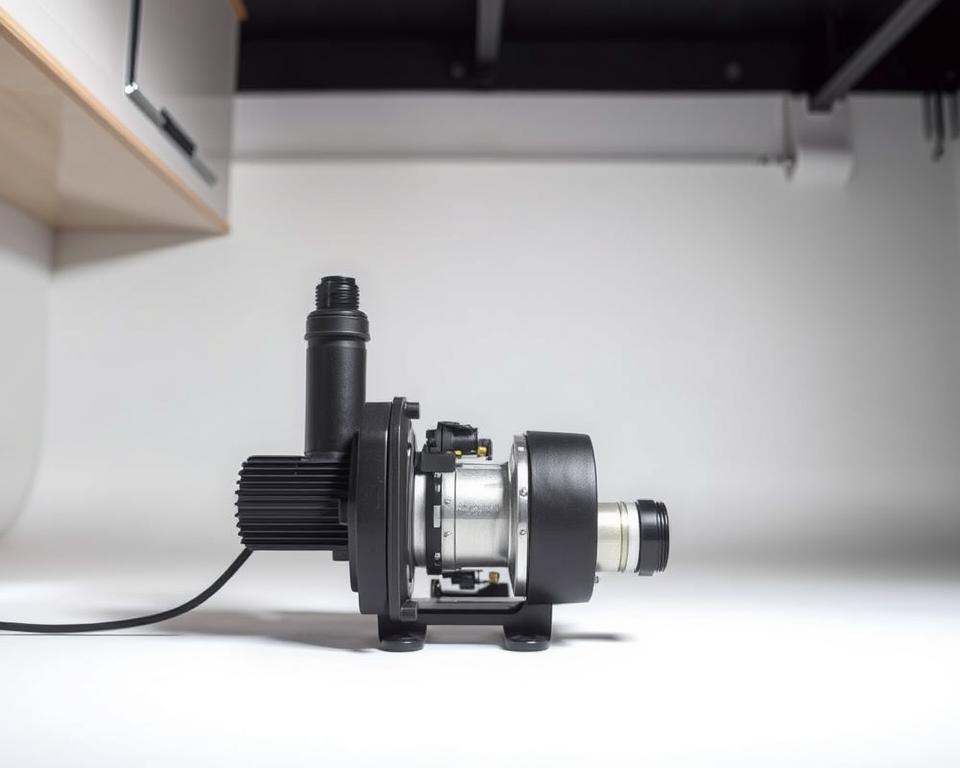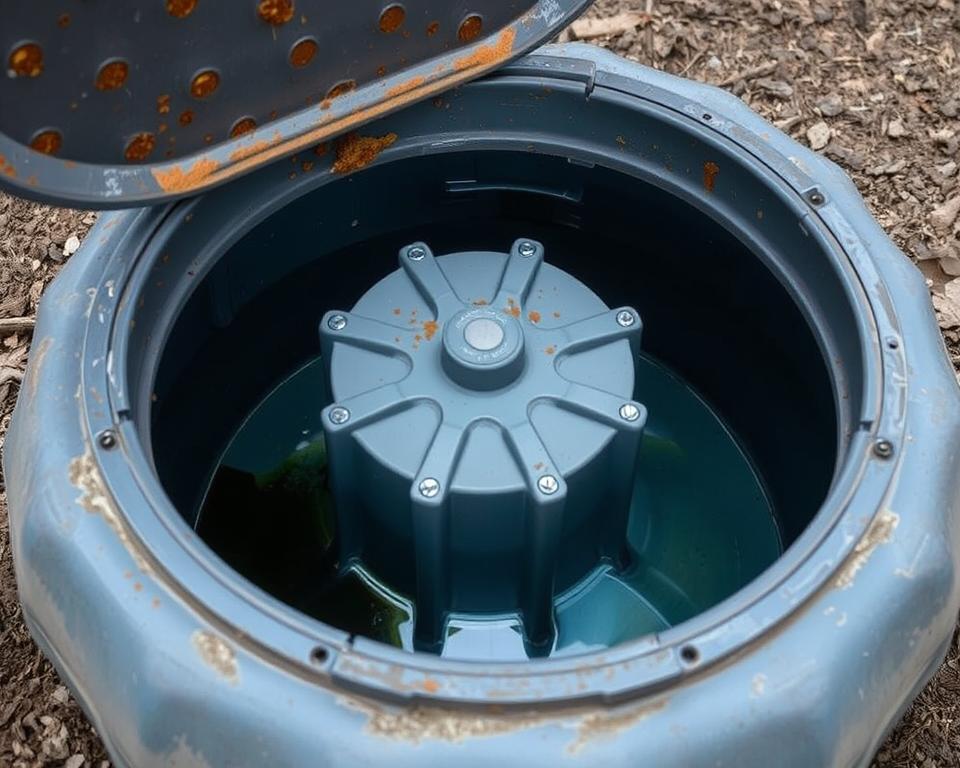Step-by-Step Guide to Fixing Minor RV Tank Issues Before Calling Bishop Pros
Comprehensive Guide to the RV Black Water Macerator Pump
Have you ever wondered how RV enthusiasts eliminate waste smoothly, even in cramped spots? The solution is found in the RV black water macerator pump. It’s a integral component that turns the solid waste from your tank into a liquid form. This makes it far easier to pump through slim hoses and over long distances. Throughout this guide, we delve into the topic of RV waste pumps. We’ll look at how they operate, their benefits, different models, how to use them, maintain them, and showcase popular brands. This is all to enhance your awareness and make sure your camper’s maceration system is first-rate.
Defining an RV Black Water Macerator Pump
An RV black water macerator pump is indispensable for roaming adventurers in recreational vehicles. It hooks up to the black water tank, functioning like a garbage disposal. Its main purpose is to grind solid waste into a slurry. This conversion allows for smoother pumping through narrower hoses, a leap from traditional methods.
This pump’s engineering allows for swift waste disposal, even over long runs or against gravity. Its practicality enhances the RVing experience, making the disposal process less stressful and minimizing foul odors from waste handling.
Using a black water disposal pump results in more sanitary waste management for RVers. It grants more choices in campsite locations by cutting dependency on nearby dump stations using RV septic pumping. In essence, having an RV black water macerator pump upgrades the comfort of camping adventures.
How Does an RV Macerator Pump Work?
An RV macerator pump attaches to the RV’s sewer outlet and leads to a disposal site through a hose. Once switched on, it effectively pulverizes waste into a thin slurry. This slurry is then propelled through a hose by the pump. This process enables waste to be transferred smoothly, outperforming traditional systems reliant on gravity.
In contrast to traditional systems, the RV macerator pump manages solids. Issues like narrow hoses and long disposal distances challenge gravity systems. But macerator pumps bypass these limitations, enabling quicker and more streamlined waste disposal, even under demanding conditions.
For RV enthusiasts, understanding how macerator pumps function is crucial to controlling waste effectively while on the move. Using this technology can significantly improve RV living, making waste management less of a hassle.

Why Use an RV Black Water Macerator Pump
RV black water macerator pumps provide numerous benefits for RV enthusiasts. They successfully reduce odors during waste disposal. This is due to the compact hoses, which lessen splatter and exposure. Thus, the process becomes significantly more bearable.
The adaptability of macerator pumps in waste disposal is another major benefit. Not all campsites have traditional gravity drainage systems. But with a macerator pump, dumping waste without a gravity system becomes simple. This means more flexibility and comfort on the road.
These pumps also speed up the waste disposal process. For RVers who enjoy boondocking or visiting less-equipped campgrounds, a macerator pump is priceless. It allows for rapid waste management. Therefore, you have more time to enjoy the outdoors without worrying about waste disposal.
The benefits of using RV macerator pumps extend beyond simple convenience. They substantially upgrade the RV lifestyle. By making waste management painless, they guarantee your travels are about exploration, not chores.
RV Macerator Pump Varieties
For RV owners, familiarizing yourself with the various macerator pumps available is essential. These pumps are designed differently, each serving a specific need. Some are built into the RV’s toilet system, while others are add-on solutions. They attach to the black water tank’s output.
Electric macerator pumps are popular for their performance in waste disposal. Their operation is simple and reliable. Conversely, water-powered macerators use the RV’s water supply to break down waste. These demand a strong backflow preventer to stop contamination.
Portable RV pumps grant unmatched versatility. They quickly hook up to black tanks, facilitating waste movement to external tanks or sewers. For RV enthusiasts who prioritize cleanliness, this versatility is key.
Steps to Run an RV Black Water Macerator Pump
Using an RV sewage pump properly ensures smooth waste disposal during your travels. Firstly, verify the pump is tightly fastened to your RV’s sewer drain point. This connection is critical for the pump’s best performance.
Then, connect the exit hose to the macerator pump, and extend it to the chosen sewer connection or dump station. This creates a clear route for waste disposal.
Commence waste transfer by releasing the tank drain valve. With the setup in place, switch on the pump. Monitor the process until the flow ceases, indicating an empty tank. Performing this step correctly guarantees proper waste disposal and avoids clogging issues.
For maintenance, employing clear hoses is helpful. They allow you to observe the waste flow and detect blockages early. Periodically, reverse flushing with water can dislodge clogs, keeping your sewage pump in top shape.
Caring for Your RV Macerator Pump
To guarantee your system’s best performance, regular maintenance of your RV macerator pump is essential. Experts suggest flushing the pump once a year to prevent blockages that could impair its efficiency. For proper maintenance, it’s necessary to first disconnect the pump from the RV. Safety requires turning off both power and water connections.
Once separated, use soapy water to scrub the impellers and hoses. This process helps remove debris and buildup. It’s also important to conduct periodic inspections. Watch for electrical issues, blown fuses, and mechanical wear signs. Fixing these issues promptly can boost your macerator pump’s trustworthiness and prolong its lifespan.
Top Macerator Pump Manufacturers
Exploring RV black water macerator pumps, you’ll find some brands dominating the market. Flojet, part of Xylem Inc., shines in crafting efficient pumps for RV needs. Their designs emphasize easy handling, making them go-to options among RV fans.
Sani-Con, a Thetford brand, delivers macerator systems that adapt to various RV setups seamlessly. Known for their simple install and intuitive controls, they attract both experienced and new RVers.
Clean Dump sets itself apart with a solid range of models for permanent or mobile use. Their priority on durability ensures their systems dependably handle diverse situations. Overall, these brands get high praise from the RV community for their effectiveness and durability.
Cost Considerations for RV Macerator Pumps
The price of RV macerator pumps can range greatly. It is determined by the brand, model, and its features. Prices generally fall between $200 to $400. For a quality unit that satisfies your needs, this is the common cost. Such an purchase significantly improves your RV lifestyle, particularly for frequent travelers or those who camp in remote areas.
Bear in mind, installation costs can raise the overall expense. Modifications to your plumbing might be necessary. Many RV owners recognize the value in professional installation. It secures that everything works well from the get-go. You must consider the total cost, including both the pump and its installation.
When you balance the costs with the benefits, the value of a macerator pump becomes obvious. For those who prize convenience and efficiency while traveling, a macerator pump is a smart choice. Over time, the initial investment often pays off.
An RV black water macerator pump greatly enhances waste management for RV users, offering convenience and better hygiene. In contrast with traditional methods, these pumps ease waste disposal. This makes it simpler to retain their surroundings sanitary at campsites.
Understanding the functionality and options of RV black water macerator pumps enables RV enthusiasts to pick the best option for their needs. While the initial expense might be notable, the benefits of efficient waste management are long term. Such benefits create a more enjoyable RV lifestyle.
Opting for an RV black water macerator pump demands careful consideration of your camping habits. With offerings from well-known companies like All in Sanitation, RV owners can locate the perfect match to improve their camping experiences.

